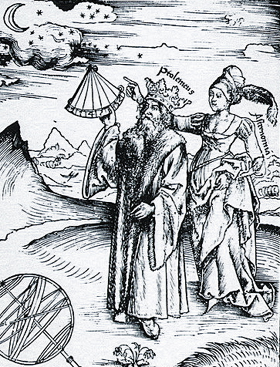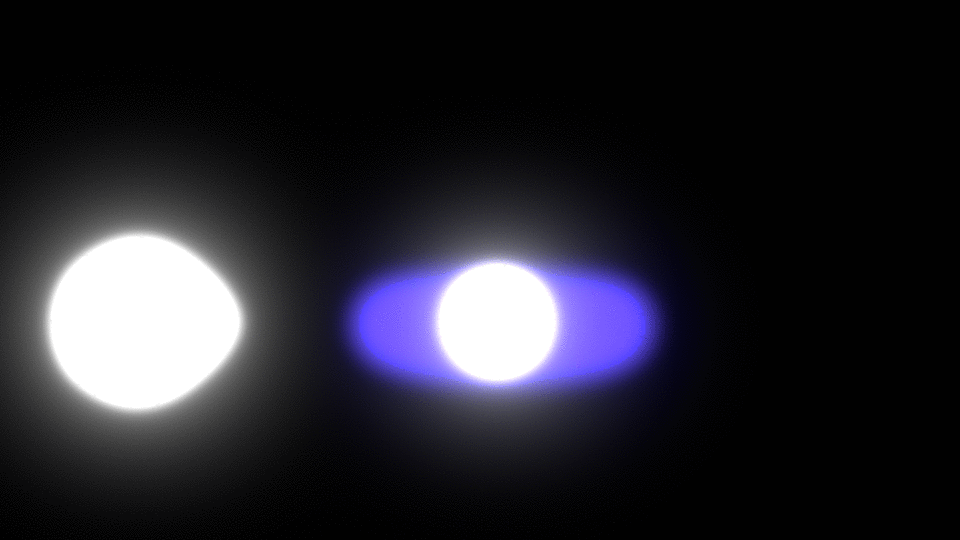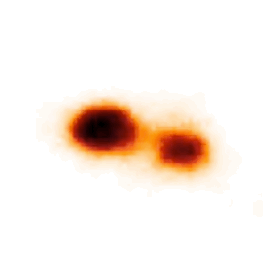|
Lyra (constellation)
, from ; pronounced: ) is a small constellation. It is one of the 48 listed by the 2nd century astronomer Ptolemy, and is one of the modern 88 constellations recognized by the International Astronomical Union. Lyra was often represented on star maps as a vulture or an eagle carrying a lyre, and hence is sometimes referred to as Vultur Cadens or Aquila Cadens ("Falling Vulture" or "Falling Eagle"), respectively. Beginning at the north, Lyra is bordered by Draco (constellation), Draco, Hercules (constellation), Hercules, Vulpecula, and Cygnus (constellation), Cygnus. Lyra is nearly overhead in temperate northern latitudes shortly after midnight at the start of summer. From the equator to about the 40th parallel south it is visible low in the northern sky during the same (thus winter) months. Vega, Lyra's brightest star, is list of brightest stars, one of the brightest stars in the night sky, and forms a corner of the famed Summer Triangle Asterism (astronomy), asterism. Beta Lyrae ... [...More Info...] [...Related Items...] OR: [Wikipedia] [Google] [Baidu] |
Hercules Family
Constellation families are collections of constellations sharing some defining characteristic, such as proximity on the celestial sphere, common historical origin, or common mythological theme. In the Western tradition, most of the northern constellations stem from Ptolemy's list in the ''Almagest'' (which in turn has roots that go back to Mesopotamian astronomy), and most of the far southern constellations were introduced by sailors and astronomers who traveled to the south in the 16th to 18th centuries. Separate traditions arose in India and China. Menzel's families Donald H. Menzel, director of the Harvard Observatory, gathered several traditional groups in his popular account, ''A Field Guide to the Stars and Planets'' (1975), and adjusted and regularized them so that his handful of groups covered all 88 of the modern constellations. Of these families, one (Zodiac) straddles the ecliptic which divides the sky into north and south; one (Hercules) has nearly equal porti ... [...More Info...] [...Related Items...] OR: [Wikipedia] [Google] [Baidu] |
Ptolemy
Claudius Ptolemy (; , ; ; – 160s/170s AD) was a Greco-Roman mathematician, astronomer, astrologer, geographer, and music theorist who wrote about a dozen scientific treatises, three of which were important to later Byzantine science, Byzantine, Islamic science, Islamic, and Science in the Renaissance, Western European science. The first was his astronomical treatise now known as the ''Almagest'', originally entitled ' (, ', ). The second is the ''Geography (Ptolemy), Geography'', which is a thorough discussion on maps and the geographic knowledge of the Greco-Roman world. The third is the astrological treatise in which he attempted to adapt horoscopic astrology to the Aristotelian physics, Aristotelian natural philosophy of his day. This is sometimes known as the ' (, 'On the Effects') but more commonly known as the ' (from the Koine Greek meaning 'four books'; ). The Catholic Church promoted his work, which included the only mathematically sound geocentric model of the Sola ... [...More Info...] [...Related Items...] OR: [Wikipedia] [Google] [Baidu] |
Sidney Hall - Urania's Mirror - Lacerta, Cygnus, Lyra, Vulpecula And Anser
Sidney may refer to: People * Sidney (surname), English surname * Sidney (given name), including a list of people with the given name * Sídney (footballer, born 1963) (Sídney José Tobias), Brazilian football forward * Sidney (footballer, born 1972) (Sidney da Silva Souza), Brazilian football defensive midfielder * Sidney (footballer, born 1979) (Sidney Santos de Brito), Brazilian football defender Fictional characters * Sidney Prescott, main character from the ''Scream'' horror trilogy * Sidney (''Ice Age''), a ground sloth in the ''Ice Age'' film series * Sidney, one of ''The Bash Street Kids'' * Sid Jenkins (Sidney Jenkins), a character in the British teen drama ''Skins'' * Sidney Hever, Edward's fireman from ''The Railway Series'' and the TV series ''Thomas and Friends''; see List of books in ''The Railway Series'' * Sidney, a diesel engine from the TV series; see List of ''Thomas & Friends'' characters * Sidney Freedman, a recurring character in the TV series ''M*A*S*H ... [...More Info...] [...Related Items...] OR: [Wikipedia] [Google] [Baidu] |
Planetary Nebula
A planetary nebula is a type of emission nebula consisting of an expanding, glowing shell of ionized gas ejected from red giant stars late in their lives. The term "planetary nebula" is a misnomer because they are unrelated to planets. The term originates from the planet-like round shape of these nebulae observed by astronomers through early telescopes. The first usage may have occurred during the 1780s with the English astronomer William Herschel who described these nebulae as resembling planets; however, as early as January 1779, the French astronomer Antoine Darquier de Pellepoix described in his observations of the Ring Nebula, "very dim but perfectly outlined; it is as large as Jupiter and resembles a fading planet". Though the modern interpretation is different, the old term is still used. All planetary nebulae form at the end of the life of a star of intermediate mass, about 1-8 solar masses. It is expected that the Sun will form a planetary nebula at the end of i ... [...More Info...] [...Related Items...] OR: [Wikipedia] [Google] [Baidu] |
Ring Nebula
The Ring Nebula (also catalogued as Messier 57, M57 and NGC 6720) is a planetary nebula in the northern constellation of Lyra , from ; pronounced: ) is a small constellation. It is one of the 48 listed by the 2nd century astronomer Ptolemy, and is one of the modern 88 constellations recognized by the International Astronomical Union. Lyra was often represented on star .... Such a nebula is formed when a star, during the last stages of its stellar evolution, evolution before becoming a white dwarf, expels a vast luminous envelope of ionized gas into the surrounding interstellar space. History This nebula was discovered by the French astronomer Charles Messier while searching for comets in late January 1779. Messier's report of his independent discovery of Comet Bode reached fellow French astronomer Antoine Darquier de Pellepoix two weeks later, who then independently rediscovered the nebula while following the comet. Darquier later reported that it was "...as large as Jupite ... [...More Info...] [...Related Items...] OR: [Wikipedia] [Google] [Baidu] |
Epsilon Lyrae
Epsilon Lyrae (ε Lyr, ε Lyrae), also known as the Double Double, is a multiple star system of at least five stars approximately 162 light-years away in the constellation of Lyra. Star system The widest two components of the system are easily separated when viewed through binoculars, or even with the naked eye under excellent conditions. The northern component is called ε1 (ADS 11635 AB in multiple star notation) and the southern ε2 (ADS 11635 CD); they lie around 160 light years from Earth and orbit each other over hundreds of thousands of years. Their separation of is about one hundred times that of the subcomponents. When viewed at higher magnifications, each intuitively likely "star" proves to be a set of shorter-term, close-orbiting binary stars. Ability to view these sub-components is a common benchmark for the resolving power of telescopes, since they are so close together: the stars of ε1 were 2.35 arc-seconds apart in 2006, those of ε2 were separated ... [...More Info...] [...Related Items...] OR: [Wikipedia] [Google] [Baidu] |
Beta Lyrae Variable
Beta Lyrae variables are a class of close binary stars. Their total brightness is variable star, variable because the two component stars orbit each other, and in this orbit one component periodically passes in front of the other one, thereby blocking its light. The two component stars of Beta Lyrae systems are quite heavy (several solar masses () each) and extended (Giant star, giants or supergiants). They are so close, that their shapes are heavily distorted by mutual gravitation forces: the stars have ellipsoidal shapes, and there are extensive mass flows from one component to the other. Mass flows These mass flows occur because one of the stars, in the course of its stellar evolution, evolution, has become a giant or supergiant. Such extended stars easily lose mass, just because they are so large: gravitation at their surface is weak, so gas easily escapes (the so-called stellar wind). In close binary systems such as beta Lyrae systems, a second effect reinforces this mass lo ... [...More Info...] [...Related Items...] OR: [Wikipedia] [Google] [Baidu] |
Binary Star
A binary star or binary star system is a system of two stars that are gravitationally bound to and in orbit around each other. Binary stars in the night sky that are seen as a single object to the naked eye are often resolved as separate stars using a telescope, in which case they are called ''visual binaries''. Many visual binaries have long orbital periods of several centuries or millennia and therefore have orbits which are uncertain or poorly known. They may also be detected by indirect techniques, such as spectroscopy (''spectroscopic binaries'') or astrometry (''astrometric binaries''). If a binary star happens to orbit in a plane along our line of sight, its components will eclipse and transit each other; these pairs are called ''eclipsing binaries'', or, together with other binaries that change brightness as they orbit, ''photometric binaries''. If components in binary star systems are close enough, they can gravitationally distort each other's outer stellar atmospheres. ... [...More Info...] [...Related Items...] OR: [Wikipedia] [Google] [Baidu] |
Beta Lyrae
Beta Lyrae (β Lyrae, abbreviated Beta Lyr, β Lyr) officially named Sheliak (Arabic: الشلياق, Romanization: ash-Shiliyāq) ( IPA: ), the traditional name of the system, is a multiple star system in the constellation of Lyra. Based on stellar parallax, parallax measurements obtained during the Hipparcos mission, it is approximately distant from the Sun. Although it appears as a single point of light to the naked eye, it actually consists of six components of apparent magnitude 14.3 or brighter. The brightest component, designated Beta Lyrae A, is itself a triple star system, consisting of an binary star#Eclipsing binaries, eclipsing binary pair (Aa) and a single star (Ab). The binary pair's two components are designated Beta Lyrae Aa1 and Aa2. The additional five components, designated Beta Lyrae B, C, D, E, and F, are currently considered to be single stars. Nomenclature ''β Lyrae'' (Latinisation of names, Latinised to ''Beta Lyrae'') is the system's Bayer des ... [...More Info...] [...Related Items...] OR: [Wikipedia] [Google] [Baidu] |
Asterism (astronomy)
An asterism is an observational astronomy, observed pattern or group of stars in the sky. Asterisms can be any identified star pattern, and therefore are a more general concept than the IAU designated constellations, 88 formally defined constellations. Constellations are based upon asterisms, but unlike asterisms, constellations are defined regions with official boundaries which together encompass the entire sky. Asterisms range from simple shapes of just a few stars to more complex collections of many stars covering large portions of the sky. The stars themselves may be bright naked-eye objects or fainter, even telescopic, but they are generally all of a similar brightness to each other. The larger brighter asterisms are useful for people who are familiarizing themselves with the night sky. The patterns of stars seen in asterisms are not necessarily a product of any physical association between the stars, but are rather the result of the particular perspectives of their observ ... [...More Info...] [...Related Items...] OR: [Wikipedia] [Google] [Baidu] |
Summer Triangle
The Summer Triangle is an astronomical asterism in the northern celestial hemisphere. The defining vertices of this imaginary triangle are at Altair, Deneb, and Vega, each of which is the brightest star of its constellation ( Aquila, Cygnus, and Lyra, respectively). The greatest declination is +45° and lowest is +9° meaning the three can be seen from all places in the Northern Hemisphere and from the home of most people resident in the Southern Hemisphere. The two stars in Aquila and Cygnus represent the head of an eagle and tail of a swan that looks east inscribed into the triangle and forming the altitude of the triangle. Two small constellations, Sagitta and Vulpecula, lie between Aquila in the south of the triangle and Cygnus and Lyra to the north. History The term was popularized by the American author H. A. Rey and the British astronomer Patrick Moore in the 1950s. The name can be found in constellation guidebooks as far back as 1913. The Austrian astronomer ... [...More Info...] [...Related Items...] OR: [Wikipedia] [Google] [Baidu] |
List Of Brightest Stars
This is a list of stars arranged by their apparent magnitude – their brightness as observed from Earth. It includes all stars brighter than magnitude +2.50 in visible light, measured using a ''V''-band filter in the UBV photometric system. Stars in binary systems (or other multiples) are listed by their ''total'' or ''combined'' brightness if they appear as a single star to the naked eye, or listed separately if they do not. As with all magnitude systems in astronomy, the scale is logarithmic and inverted i.e. lower/more negative numbers are brighter. Most stars on this list appear bright from Earth because they are nearby, not because they are intrinsically luminous. For a list which compensates for the distances, converting the ''apparent'' magnitude to the ''absolute'' magnitude, see the list of most luminous stars. Measurement The Sun is the brightest star as viewed from Earth, at −26.78 mag. The second brightest is Sirius at −1.46 mag. Fo ... [...More Info...] [...Related Items...] OR: [Wikipedia] [Google] [Baidu] |










